
Static Stretching Vs. Mobilization Exercises
Static stretching used to be a vital part of everyone's warm-up. Recently that pendulum has swung back the other way, and everyone knows it makes you weak and slow... right? Well, actually, like most things static stretching is fine in its place. If you're going to use it as part of your warm up routine, build it in after your general warm-up and before the sport specific part, and try to think of it as stretching out, rather than trying to actually increase flexibility long term. That kind of stretching really doesn't belong in a warm-up. Mobilization is something different; that involves trying to move your joints rather than lengthening muscles, and it reflects a different approach from static stretching. It's more focussed on general areas of the body and on specific performance tasks - hip and upper back mobility is important in the front squat, for instance. So throwing some mobilization work that's appropriate for your sport into your warm-up is a good idea too. It's best to start with a general warm-up, like skipping, cycling or running, to increase heart rate and muscle elasticity before going on to stretching or mobility work.
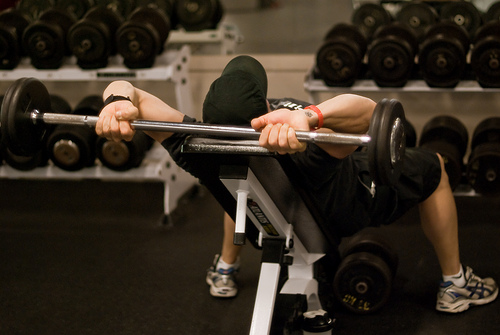
Do Your Strength Training Before Your Cardio
Your strength training will affect your cardio performance, no doubt. But the general rule of thumb should be to do the most demanding work first. That means you'd do your strength training before your cardio because it's more taxing on your central nervous system and on your muscles, too. Otherwise you'll hit the strength building part of your workout too fatigued to give it your best shot, and the results you'll get will be mediocre. A warm up is one thing, but don't train the wrong way round. You should do power, then strength, then finally endurance and cardio, in that order.
- Important notification about information and brand names used in this slideshow!
- Photo courtesy of Benjamin J. DeLong by Flickr : www.flickr.com/photos/bozdoz/4176896175/
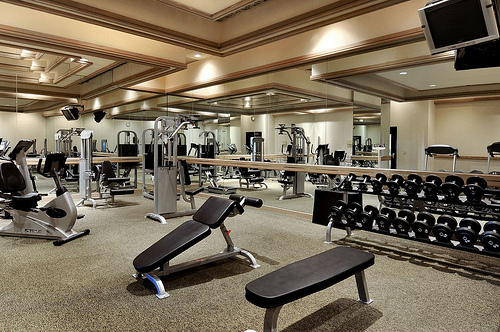
Free Weights Vs. Machine Exercises - The Lowdown
It's usually a good idea to build the majority of your training round free weights rather than machines. Machines tend to be isolation exercises, which removes the stabilization requirement of free weights, and they often follow movement patterns that don't suit everybody. Crucially, free weights allow you to do compound exercises that produce great fitness benefits. Machines can be beneficial. They allow you to more or less forget about form, for instance. While that's usually a bad thing, it does mean that you can use them for circuits or when you're very tired without worrying that you'll hurt yourself. They're also helpful for getting over a plateau in your training, or if you're recovering from an injury. For the majority of your training sessions, though, stick to big, compound movements with free weights.
- Important notification about information and brand names used in this slideshow!
- Photo courtesy of redlionhoteldenver by Flickr : www.flickr.com/photos/43536733@N03/4009413538/

Lift Heavier Weights For Better Power And Stability - And Strength!
If there was a single piece of fitness advice we could all benefit from, it's this. Make sure you know what you're doing, and that your program is sound. But after that, lift heavier weights! Heavy weights recruit more motor units and build more muscle. They build confidence. They make you faster, leaner, more stable, less injury-prone. They help with weight loss. Oh, and they make you stronger. For maximal strength, experienced lifters should be lifting in the very low rep ranges, mostly under 5 reps per set, and with very heavy weights - up to 95% of your 1 rep max, the heaviest weight you can possibly lift. But for people who are newer to lifting, why not try finding a weight you can lift 8-10 times at the most and using 5-8 reps a set for 5 sets? The last set will be tough, but you'll be building some muscle and getting your nervous system used to the demands of the movements. And you'll soon see the results.
- Important notification about information and brand names used in this slideshow!
- Photo courtesy of Maik Meid by Flickr : www.flickr.com/photos/frnetz/8708901133/
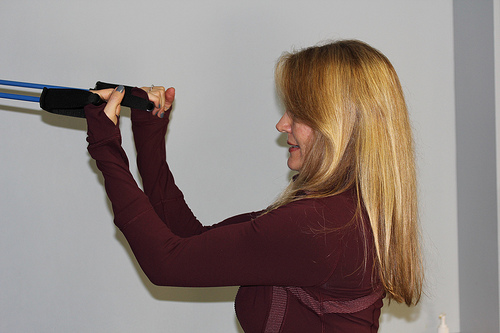
Add More Work To Each Rep To Bust Through Plateaux
You don't need to add more reps to each set to get more work done. Here are a couple of simple methods to improve your results by making each rep more demanding. Active Eccentrics The eccentric part of a lift is the part where you're moving where the weight wants you to go. Normally that means lowering it, as in a squat or an overhead press. Active eccentric movements are those where, rather than let the weight push you down, you actively pull down as if you were being resisted. For the overhead press, you'd reach lockout and then pull down as if you were doing a pullup. That engages your lats and traps more and helps you work on your stability, and it makes each rep that much more demanding - and rewarding! Lock-out Push You can do this with pulling exercises too. Again, for the overhead press, when you reach lockout, push a little further, 'suck' the bar down again without bending your arms and repeat. You're using your support musculature to move the whole business of your shoulders up and down your back slightly. Add a couple to every rep, and you'll find two things: one, every...
You don't need to add more reps to each set to get more work done. Here are a couple of simple methods to improve your results by making each rep more demanding. Active Eccentrics The eccentric part of a lift is the part where you're moving where the weight wants you to go. Normally that means lowering it, as in a squat or an overhead press. Active eccentric movements are those where, rather than let the weight push you down, you actively pull down as if you were being resisted. For the overhead press, you'd reach lockout and then pull down as if you were doing a pullup. That engages your lats and traps more and helps you work on your stability, and it makes each rep that much more demanding - and rewarding! Lock-out Push You can do this with pulling exercises too. Again, for the overhead press, when you reach lockout, push a little further, 'suck' the bar down again without bending your arms and repeat. You're using your support musculature to move the whole business of your shoulders up and down your back slightly. Add a couple to every rep, and you'll find two things: one, every set gets impossibly long, and two, you start seeing muscles like your serratus anterior stand out. And you'll get stronger and more stable.
- Important notification about information and brand names used in this slideshow!
- Photo courtesy of bwanderd by Flickr : www.flickr.com/photos/86598533@N04/8253359536/
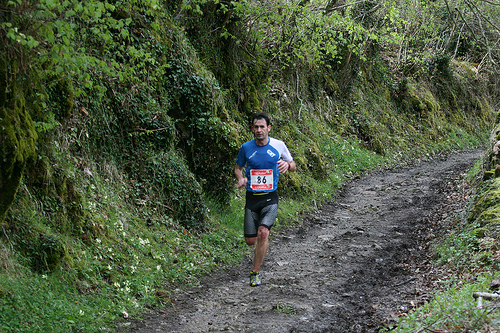
Hill Running: Difficult, Rewarding, Effective And Free
Hill running is one of the most demanding exercises there is. It's psychologically daunting and physically exhausting. You can build this into your training in several ways. Assuming your hill isn't outside your house or gym, here's how to add a hill running day to your weekly training schedule for great results. Start by pacing out a distance. It doesn't need to be exact, but find out roughly the distance you're dealing with. Then warm up with some jogging and squats. Now, either use a timer and run interval sprints up the hill or sprint a distance, return to the beginning and repeat. Either of these methods is scalable, so however fit you are, if you give it some real effort it will level you quickly. Take a breather and then run a mile or so over the hilly terrain. You'll soon start seeing the extra strength and fitness benefits!
- Important notification about information and brand names used in this slideshow!
- Photo courtesy of Martin Alvarez Espinar by Flickr : www.flickr.com/photos/martinalvarez/9164251787/

Do Push-Ups For Healthy Shoulders And A Strong Core
Push-ups may be the most under-rated exercise on the planet. They require no equipment, no special clothing and hardly any room, yet they affect pretty much the whole body. A push-up is a moving plank, which means that you have to stabilize your core in movement, not just statically as in a plank. Therefore, if you can't hold a plank for 30 seconds or so, work up to that before you try to do push-ups. Push-ups also require dynamic stability of the shoulder - more than the bench press, for instance. They're a good way to improve shoulder health and protect against rotator cuff problems, though they're also a good way to injure yourself if you get carried away. I'd try doing two or three sets of a number you can do comfortably, and build up from there after a month or so. Remember to keep your elbows close to your ribs: letting them flare out means throwing too much stress on the stabilizing muscles while they're in a compromised position, which can result in injuries.
- Important notification about information and brand names used in this slideshow!
- Photo courtesy of PFC Charlie Chavez by Wikimedia Commons : en.wikipedia.org/wiki/File:Marines_do_pushups.jpg
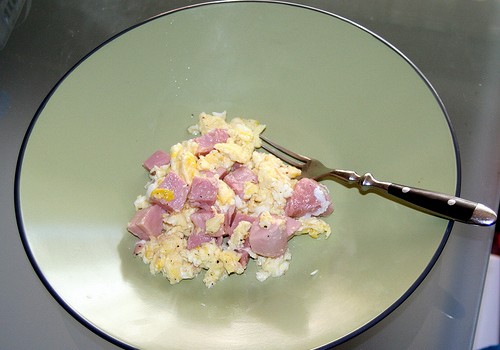
Don't Neglect Your Post-Workout Meal Or Snack
Your post-workout meal may be the most important one of the day. When your body is tired and starving for nutrients, what you give it will determine what you get to a fairly large extent. You'll want to feed it carbohydrates to replace those lost in training, some fat and plenty of high-quality protein, and some vitamins and minerals to help with macronutrient absorption and to mop up the free radicals created by exercise. In short, a meal like a chicken salad sandwich would be an excellent choice.
- Important notification about information and brand names used in this slideshow!
- Photo courtesy of Dan Perlman by Flickr : www.flickr.com/photos/wckdgfy/4068768191/
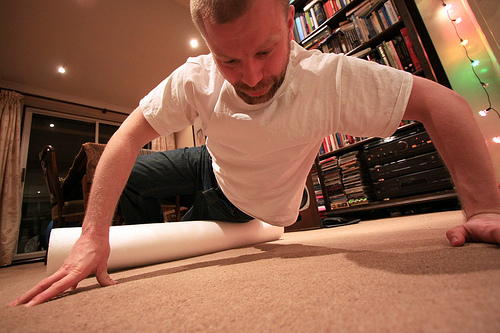
Active Recovery: Foam Rolling, Soft Tissue Work And More
Active recovery can be a good way to reduce your chances of injury and to keep on top of soreness and stiffness. There are a number of tools that you can use to do this, but most gyms will make foam rollers available to you. These tubes of high-density foam can be used to 'self-massage' the areas that are in discomfort, and there are a number of exercises for the purpose. You can get someone at your gym to show you, but here we'll briefly go over how to use a foam roller on your iliotibial band. The iliotibial band is a muscle down the outside of your thigh that stabilizes your thigh. It gets a lot of work and can stiffen up easily. Try putting the ankle of your left leg on the knee of your right leg. Now put the foam roller under your left leg, just below your glutes. Use your right leg and hands to take your weight, as you move the roller down the outside of your left thigh. You can control the amount of pressure you use and the speed you move. This will help release any sticking points and relax the muscles...
Active recovery can be a good way to reduce your chances of injury and to keep on top of soreness and stiffness. There are a number of tools that you can use to do this, but most gyms will make foam rollers available to you. These tubes of high-density foam can be used to 'self-massage' the areas that are in discomfort, and there are a number of exercises for the purpose. You can get someone at your gym to show you, but here we'll briefly go over how to use a foam roller on your iliotibial band. The iliotibial band is a muscle down the outside of your thigh that stabilizes your thigh. It gets a lot of work and can stiffen up easily. Try putting the ankle of your left leg on the knee of your right leg. Now put the foam roller under your left leg, just below your glutes. Use your right leg and hands to take your weight, as you move the roller down the outside of your left thigh. You can control the amount of pressure you use and the speed you move. This will help release any sticking points and relax the muscles.
- Important notification about information and brand names used in this slideshow!
- Photo courtesy of Phil Gradwell by Flickr : www.flickr.com/photos/philgradwell/7339259310/
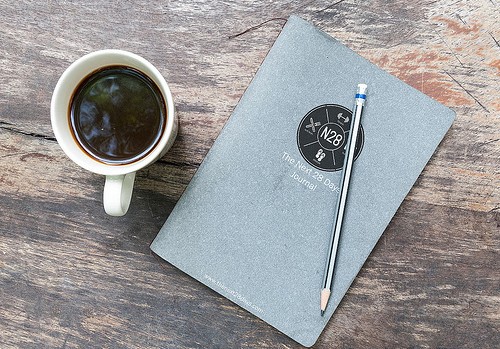
Record Your Progress In A Training Journal
Probably the most important piece of training equipment you can own is a notebook. Whether that's a spiral-bound reporter's pad or a razor-thin high-end laptop, use it to set your goals, lay out your plans and record your progress. It will help keep you motivated, and you can use it to find out what works for you long term, what doesn't and what always seems to leave you sore. Tracking your progress helps make sure you're heading in the right direction. Take your training journal everywhere you train and when you're designing your programs, mine your journals. Go back six months or more and check out what worked for you then, and how. Then you can build a program that delivers solid results.
- Important notification about information and brand names used in this slideshow!
- Photo courtesy of Next TwentyEight by Flickr : www.flickr.com/photos/thenext28days/9264642405/



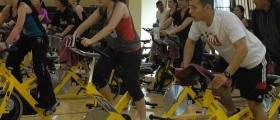



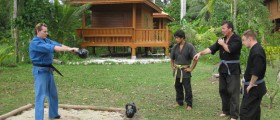

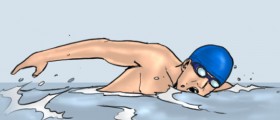


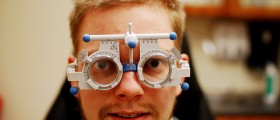




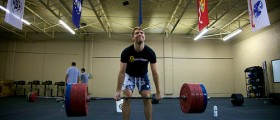

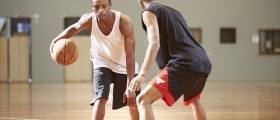

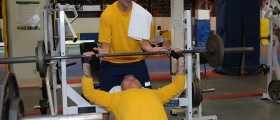

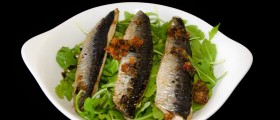

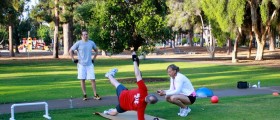
Your thoughts on this
Loading...